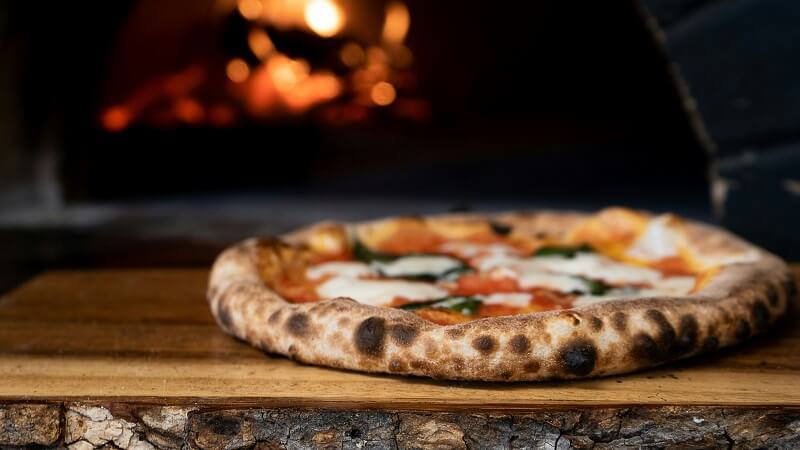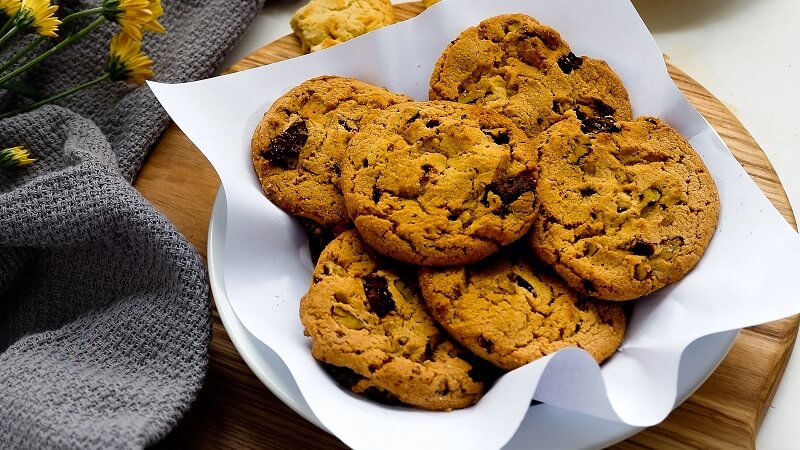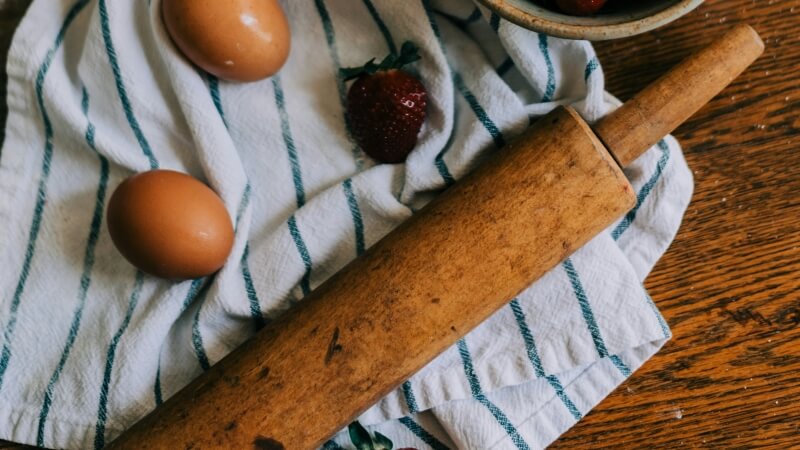
How To Make Homemade Pizza:Essential Tips and Precautions
Learn how to make homemade pizza with a simple, delicious recipe that rivals your favorite restaurant! This dough is a breeze to prepare and bakes

The embossed rolling pin is a simple yet magical kitchen tool that takes dough from plain to beautiful in minutes. Unlike a regular rolling pin which flattens dough into a smooth canvas, the embossed rolling pin imprints designs and textures as you roll, transforming dough into an edible work of art.
From pies and pastries with intricate woven lattices to holiday cookies with cheerful shapes, the possibilities with an embossed rolling pin are endless. Let’s explore the history, varieties, techniques and creative potential of this baking game-changer.

The rolling pin has ancient origins, with mentions dating back to the Roman Empire. The earliest versions were simply a cylinder of wood for applying even pressure to flatten dough.
Rolling pins evolved across cultures over thousands of years, acquiring tapered ends, handles, and sizes suited for different tasks. The French created a thin rolling pin without handles ideal for delicate pastry doughs. American and English bakers adopted the rod style with handles for leverage and pressure.
The embossed rolling pin took the functionality even further by imprinting designs and textures. As early as the 1700s, creative woodworkers experimented with hand-carving patterns into rolling pins. By the Victorian era, home bakers were using embossed pins to add beautiful details to pies, pastries and ornamental baked goods.
Rolling pins continued to develop in materials and embellishments into the 20th century. Artisan woodworkers produced decorative rolling pins with detailed scenes, figures and motifs. In the 1980s, Marcia Copeland launched a business handcrafting embossed ceramic rolling pins that became wildly popular kitchen gifts.
Today, embossed rolling pins come in more materials and designs than ever. Modern cooks have endless options for creative baking with these sculpted pins that transform simple dough into edible art.
Embossed rolling pins are commonly crafted from various materials that each have their own benefits:
Beyond basic criss-cross lattice patterns, today’s embossed rolling pins offer diverse options for creative baking. Here are some popular motifs and designs:
With so many options available, keep these tips in mind when selecting an embossed rolling pin:
Buy multiple pins for different effects and design combinations!

Follow these techniques to get the best imprints from your embossed rolling pin:
The embossed rolling pin elevates baking to an art form. Some fun ways to decorate with yours:
The embossed rolling pin isn’t just for baking – get creative with these ideas:
An embossed rolling pin makes a wonderful gift for any baker or creative cook. Consider these ideas:
Beyond imparting beauty to everyday baked goods, the embossed rolling pin holds incredible artistic potential. Impressionist bakers use these pins to create one-of-a-kind edible artworks and stunning centerpieces.
Intricately carved antique pins can imprint Old World scenes for storytelling through food. Custom laser-engraved pins allow cooks to immortalize family photos or illustrations on pies and pastries.
For crafters, imprinting polymer clay or salt dough before cutting out shapes adds artisanal detail. Botanical artists can capture delicate details of leaves, petals and vines in dough. Aspiring sculptors can create mini landscapes on bread.
The embossed rolling pin is truly a magical tool limited only by imagination. With creativity and practice, it unlocks a world of edible artistry and self-expression.
With so many designs and materials available, choosing the right embossed rolling pin comes down to considering your baking habits and style:
Opt for classic motifs like florals over niche themes, so you can use your pin often. All-over patterns without a fixed orientation work for most doughs.
If you regularly make large sheet pies, look for a long pin at least 20 inches. Those who bake muffins and cookies may prefer a shorter, lighter pin.
Dough texture determines the best material. Marble stays cool for flaky pastry while wood offers grip for sticky whole grain doughs.
Deeper carvings make bolder designs. Shallower patterns allow more rising. Look closely at photos to gauge engraving depths.
Comfort is key for long rolling sessions. Test weights and grip sizes in-store if possible.
Having a set of embossed pins in different materials opens creative possibilities.
Quality pins cared for properly can imprint perfect dough for generations. Select ones you’ll love using for years.
Like any treasured kitchen tool, embossed rolling pins require some care to keep them looking and performing their best:
More than just a practical tool, the embossed rolling pin represents the profound human urge to find art in everyday objects and activities. Its carved surfaces transform humble dough into a conduit of creativity and self-expression.
In a world of mass-produced goods, handcrafted embossed rolling pins maintain the traditions of artisanship and heirloom quality. They invite us to slow down, find beauty in simplicity, and turn cooking into an act of meditation.
Beyond just impressing designs, these sculpted pins imprint love and care into our food. As our fluted, flower-strewn pie crusts and patterned cookies emerge from ovens through the years, may they remind us of the delight found when art meets life.


Learn how to make homemade pizza with a simple, delicious recipe that rivals your favorite restaurant! This dough is a breeze to prepare and bakes

Have you ever felt like a screaming cat in the kitchen, especially when your biscuit attempts seem more like baking blunders? Well, it’s time to

Every baker knows that a rolling pin can be both a best friend and a formidable foe in the kitchen. Mastering the art of removing

As the holiday season approaches, the charm of Christmas decorating candy becomes irresistible. It’s not just about the sweetness; it’s about adding a personal touch

Learn how to make homemade pizza with a simple, delicious recipe that rivals your favorite restaurant! This dough is a breeze to prepare and bakes

Have you ever felt like a screaming cat in the kitchen, especially when your biscuit attempts seem more like baking blunders? Well, it’s time to

Every baker knows that a rolling pin can be both a best friend and a formidable foe in the kitchen. Mastering the art of removing

As the holiday season approaches, the charm of Christmas decorating candy becomes irresistible. It’s not just about the sweetness; it’s about adding a personal touch
Copyright © 2024 bakemasterrollingpin. All Rights Reserved.